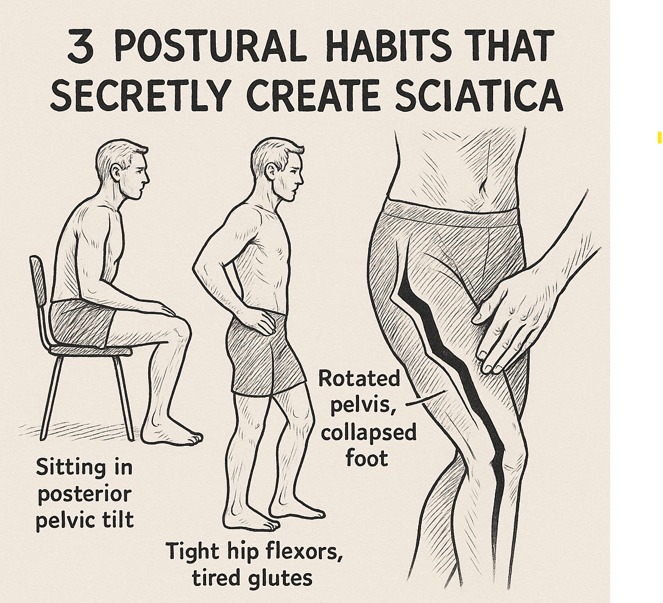From Sedentary to Active: Overcoming Piriformis Syndrome and Getting Moving Again
- JANMI

- Jan 7, 2023
- 3 min read

Piriformis syndrome is a condition that occurs when the piriformis muscle, which is located in the buttocks, becomes tight or inflamed. This can cause pain in the buttocks and lower back, as well as numbness and tingling in the legs. Piriformis syndrome is often caused by overuse or strain on the muscle, but it can also be the result of underlying medical conditions such as sciatica or spinal stenosis.
Piriformis syndrome can significantly impact the daily lives of those who suffer from it, making it difficult to perform activities such as walking or sitting for long periods of time. It can also cause difficulty sleeping and may lead to depression and anxiety. The condition is more prevalent in modern society due to the increasing amount of time that people spend sitting, whether it be at a desk or in front of a screen.
It is unknown whether piriformis syndrome was a common condition among our ancestors, as there is limited evidence on the subject. However, muscle strains and injuries were likely common in traditional societies due to the demands of daily life, including walking and standing for long periods of time.
Here are five facts about piriformis syndrome that many people may not be aware of:
Piriformis syndrome can cause pain in the buttocks and lower back, as well as numbness and tingling in the legs.
The condition is often caused by overuse or strain on the piriformis muscle.
Piriformis syndrome can be exacerbated by prolonged sitting, improper posture, and a sedentary lifestyle.
The condition is more common in individuals who engage in activities that place repetitive strain on the piriformis muscle, such as running or cycling.
Piriformis syndrome can often be managed with non-surgical treatment options such as stretching, strengthening exercises, and physical therapy.
Here are five exercises that may help to improve piriformis syndrome:
Piriformis stretches: Lie on your back with your knees bent and both feet flat on the ground. Cross your affected leg over the other leg and gently pull the bent knee towards your chest until you feel a stretch in the buttocks. Hold the stretch for 30 seconds, then switch legs.
Gluteal stretches: Lie on your back with your knees bent and both feet flat on the ground. Cross your affected leg over the other leg and gently push down on the bent knee to stretch the gluteal muscles. Hold the stretch for 30 seconds, then switch legs.
Hip flexor stretches: Kneel on one knee with the other foot in front of you and your hands on your hips. Gently push your pelvis forward until you feel a stretch in the front of your hip. Hold the stretch for 30 seconds, then switch sides.
Squats: Stand with your feet shoulder-width apart and your hands by your sides. Slowly lower your body down as if you are sitting back into a chair, then raise back up. Repeat this movement 10-15 times.
Lunges: Stand with your feet shoulder-width apart and take a step forward with one leg. Lower your body down until your thigh is parallel to the ground, then push back up. Repeat this movement 10-15 times, then switch legs.
It is important to consult with a medical professional before beginning any exercise program to improve piriformis syndrome. Stretching and strengthening exercises may help to alleviate symptoms and improve mobility, but in some cases, more advanced treatment may be necessary.
Disclaimer: The information provided in this blog post is intended for general informational purposes only and is not a substitute for professional medical advice. Please consult with a medical professional before starting any exercise program or attempting to self-treat a medical condition.
It is also important to note that while exercises can help to improve piriformis syndrome, they are not a substitute for proper medical treatment. If you are experiencing symptoms of piriformis syndrome, it is important to seek medical attention in order to receive a proper diagnosis and treatment plan.
In addition to exercises, there are several other treatment options that may be recommended for piriformis syndrome, including rest, ice and heat therapy, over-the-counter pain medications, and physical therapy. In some cases, more advanced treatments such as corticosteroid injections or surgery may be necessary.
Overall, piriformis syndrome can be a frustrating and debilitating condition, but with proper treatment and self-care, it is possible to manage and reduce the severity of symptoms. It is important to take an active role in your own health and seek out the necessary medical treatment in order to live a pain-free and active life. So, it is always better to consult with a medical professional before starting any exercise program or attempting to self-treat a medical condition.



Comments